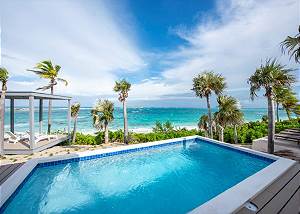
Sustainable Adventures: Your Guide to Eco Nomad Travel (2025)
Affiliate disclosure: Some links below may be affiliate links. If you purchase through them, we may earn a commission at no extra cost to you. We only link to tools and services that fit an eco-first travel approach.
Digital nomadism is booming, but the future of travel hinges on how we move, eat, sleep, and spend. Eco nomad travel is the practical fusion of freedom and responsibility: longer stays, fewer hops, rail-first routing, ethical operators, and daily habits that keep your footprint lean without draining your energy or budget. This guide turns ideals into a field-tested system you can use on your next trip.
Fast-start toolbelt:
- Search flexible flights on Aviasales (use nonstop filters; tag shoulder dates).
- Activate an Airalo eSIM (skip plastic and shop visits).
- Try a Yesim eSIM as a backup (good redundancy when moving borders).
- Pre-book shared/efficient transfers with Kiwitaxi where rail/bus don’t reach.
- Compare multi-modal options on Trip.com (buses, some trains, and flights).
Want the deeper logic first? Keep reading—then circle back to the tools once you’ve mapped your route.
What Eco Nomad Travel Really Means
Labels don’t lower emissions; choices do. We define eco nomad travel as a pattern of decisions that keep your impact low and your experience rich. In practice:
- Fewer, longer stays: The single biggest lever. Every flight avoided matters. Stretch 2–3 hubs to 7–10 nights each and use day-trips to scratch variety without extra checkouts, laundry, and taxis.
- Rail-first moves: When feasible, rail and coaches beat short-haul flights door-to-door. See our breakdown in Train vs Plane Emissions 2025. Night trains = transport + lodging in one line item.
- Walkable, transit-served bases: Choose neighborhoods where groceries, markets, parks, and coworking are a short walk or tram away. Location is an environmental policy you set once.
- Ethical, transparent operators: Fewer buzzwords, more measurable policies (energy, water, waste, wildlife rules, hiring). Ask for specifics; reward good answers with your booking.
- Daily low-waste habits: Refillable water, plant-forward meals, reusables, and repair over replace. Gear tips: Zero-Waste Packing List 2025.
What this looks like day-to-day
Morning market walk with a tote and container; mid-morning deep work in a light-filled cowork; park lunch; late tram home; dinner at a family spot; refill bottle at a public fountain. No ride-hails, no plastic, no stress.
Common myths (and fixes)
- “Eco = expensive.” Longer stays lower nightly rates; transit passes beat ride-hails; markets beat tourist rows.
- “I have to give up comfort.” Comfort is proximity: a quiet, walkable base near parks and groceries beats a distant “luxury” every time.
- “Data or Wi-Fi will be a problem.” Preload an eSIM (below), cache maps/docs offline, and schedule sync windows.
Eco travel isn’t about being perfect. It’s about designing a lifestyle that defaults to better outcomes—with tools and routines that make the greener choice the easier one.
A Simple Framework to Plan Eco Nomad Travel
1) Pick your “loop,” not a bucket list
Choose a region and draw a loop (or L-shape) along strong rail/ferry corridors. Base for a week+ in 2–3 hubs instead of racing through 8 spots in 10 days. This slashes transit miles, packing, and decision fatigue. Sample loops: Iberia (Lisbon–Porto–Madrid), Alpine arc (Zurich–Innsbruck–Salzburg), Baltic–Nordic (Copenhagen–Gothenburg–Oslo).
Heuristic: If a place needs a car to function or daily taxis, it’s the wrong base for this trip. Save it for a future nature-focused week with a compact hybrid.
2) Compare door-to-door time for each leg
Under ~800 km, rail often matches or beats flying after you add security, boarding, and airport transfers. We show the math in Train vs Plane Emissions 2025. If you must fly, prefer nonstops and pack light.
- Morning departures: Fewer cascading delays, safer buffers.
- Same-station transfers only: Avoid cross-town changes when you can.
- Backup coach bookmarked: Weather and strikes happen.
3) Book stays that cut your daily miles
Location is your silent footprint reducer. A transit stop within 5 minutes, a market within 7, a park within 10. Energy/water policy and guest-visible recycling are strong green flags. More selection logic in Sustainable Stays: Avoid Greenwash.
4) Pre-decide your “circular kit”
Arrive with reusables and repair. Purifier bottle, solids/refills, collapsible container, fork/spoon, cloth napkin, needle + tape. Build from Eco Travel Kit 2025.
5) Spend where it sticks
Street markets, family eateries, community tours, artisan co-ops. Better value, better stories, more money kept local. For daily patterns, bookmark Low-Impact Travel Habits.
Transport: Rail-First, Smarter Flights, Better Last-Mile
International legs: flights you can live with
Sometimes you must fly. Make it the only flight you need and set it up well:
- Find flexible flights on Aviasales and test shoulder dates and nearby rail-linked airports.
- Arrive by daylight for transit access; avoid late-night ride-hails.
- Carry-on only if you can—faster, cheaper, lower-emission weight.
- Choose nonstop to avoid the extra climb + descent (and missed connections).
Regional moves: rail and coaches
150–800 km is rail country. Express coaches fill gaps with good Wi-Fi and power. Night trains merge transport and lodging—arrive downtown rested. Dive deeper: How to Book European Sleepers (2025) and Night Train
Booking the moves (smart + flexible): Eco nomad travel is about optimizing the loop: fewer hops, more living. Track these three: Slow travel only works if it’s legal. Check official government sites for digital nomad visas or longer tourist stays, and remember that right-to-work rules still apply. Build buffer days before expiry, keep digital copies of documents, and use morning appointments for extensions. Longer, compliant stays are the heart of eco nomad travel. Heat, storms, and wildfire smoke are travel factors now. Shoulder seasons mitigate crowding and climate stress on infrastructure. When rail reliability dips (heat kinks or wind), keep a same-day coach backup bookmarked and travel early. For coastal trips, follow reef-safe rules and tide guidance; for mountain trips, check trail advisories and respect closures. Ready to route wisely?
Find Flexible Flights
·
Get Your eSIM
·
Book Efficient Transfers
Disclosure: affiliate links may earn us a commission at no extra cost to you. Level up your eco nomad travel with these in-depth guides: Fast itineraries stack emissions in sneaky ways: every checkout spawns taxis, laundry, disposable packaging, and extra meals on the move. A slow itinerary collapses that overhead. As a rule of thumb, one transcontinental flight plus two regional rail legs and one week-long urban base can cut door-to-door CO₂ by half versus six short flights and daily ride-hails. That’s before you count the mental carbon of decision fatigue. If a hop is under ~800 km, run the numbers—rail often wins on both time and footprint; see the practical comparisons in Train vs Plane Emissions 2025. When flying is unavoidable, lock a single nonstop into your plan, arrive by daylight for effortless transit, and book flexible fares with Aviasales so you can shift to shoulder dates without reworking the whole loop. Nothing is greener than not relocating every few days—and nothing enables that like the right visa. Before you book, align your route with a visa that supports longer, lawful stays (nomad visas, extended tourist periods, or regional agreements). Fewer border runs mean fewer flights, less admin, and deeper local routines. Keep a simple compliance stack: scanned docs, local address, proof of funds, and a calendar reminder for extensions. When a destination’s rules are tight, pivot to a nearby rail-connected hub with friendlier terms and day-trip back for specific experiences. For the on-the-ground rhythm, pair a long-stay base with weekend rail out-and-backs; ideas live in our Eco Travel Places 2025 and Workation Cities Without a Car. Eco travel gets easy when your neighborhood is doing the work. Map a “10-minute radius” from your stay: a frequent tram or metro, a public park, a produce market, a pharmacy, and a cowork within a short walk. That micro-geography strips out ride-hails, impulse deliveries, plastic bottles, and wasted time. If your search tool doesn’t show transit layers, preview the area on open transit maps, then sanity-check street life via recent images. In dense cities, a slightly less central but transit-rich area often outperforms a tourist core for both budget and sleep. For stay vetting, lean on our policy checks in Sustainable Stays: Avoid Greenwash, and when last-mile options are thin (islands, late arrivals), line up a shared transfer through Kiwitaxi to batch rides. “I got stuck without Wi-Fi” is how rushed plans balloon into emissions. Go offline-first: preload maps, translations, and rail tickets; set your cloud to sync twice daily; keep brightness at 60–70%. Install an eSIM before you land so you’re not hunting kiosks or plastic cards; Airalo is fast for regional packs, while Yesim is a good cross-border backup. For mixed-mode routing and coverage gaps (buses + flights), compare on Trip.com. Treat power like a budget: batch-charge at night, use daylight for deep work near windows, and carry a small bank only if you’ll truly need it (weight is energy, too). The most repeatable eco nomad pattern looks like this: fly nonstop into a rail hub, stay 7–10 nights within a short walk of a tram and a park, and schedule 2–3 day-trips out and back. You get novelty and routine without the repacking drag. Example: base in Lisbon (tram + market radius), day-trip by train to Cascais and Sintra; then rail to Porto for a second week; finish with a single nonstop home. For Central Europe, swap in Munich → Salzburg → Vienna with sleepers where sensible; our booking playbook is in How to Book European Sleepers (2025) and Night Trains in Europe. Always sanity-check door-to-door time before choosing planes over tracks, and keep one refundable backup on Aviasales in your pocket for weather days. Eco nomad travel isn’t a moral contest or an aesthetic. It’s a system that makes better outcomes feel natural: longer stays, rail-first routes, walkable bases, circular gear, seasonal food, and money that circulates nearby. The result is a calmer mind, a richer trip, and a footprint that respects the places you love. Pick a region, map a loop, and build your kit. Then step into a routine that trades “more” for “deeper.” You’ll bring home better stories—and leave less behind.
Plan the One Flight You Need
·
Switch On Your eSIM
·
Secure Low-Impact Transfers
Jeremy Jarvis writes practical guides for rail-first itineraries, real sleeper routes, and resilient zero-waste packing systems. Expect fewer hops, more neighborhood time, and honest trade-offs between time and CO₂. Read more: Sustainable Travel Guide · Night Trains · Nomad PackingThree Sample Eco Nomad Loops (Copy, Tweak, Enjoy)
Iberian Rail Loop (14–21 days)
Alpine Arc (12–18 days)
Baltic-Nordic Ring (16–22 days)
Budgeting for Eco Nomad Travel (Spend Less, See More)
Measure What Matters: Time, Money, and Emissions
Visas, Compliance, and the Art of Staying Longer
Seasonality and Climate Reality
Tech That Helps Without Owning You
Put It All Together: Your First Eco Nomad Sprint
Read Next (Internal Guides)
Advanced Eco Nomad Travel: Real-World Tactics That Compound
Slow Travel Carbon Math: Why Two Bases Beat Six Stops
Visa Strategy for Eco Nomads: Compliance That Enables “Slow”
Neighborhood Selection: A 10-Minute Lifestyle Radius
Connectivity & Offline Ops: Phones That Sip Power, Trips That Keep Moving
Patterned Itineraries That Work: A Week in a Rail Hub, Then Day-Trips
Conclusion: Eco Nomad Travel Is a System—Make It Yours
About the Author

Plan Your Eco Nomad Trip (Interactive Toolkit)
Use this quick planner to sketch a low-impact loop, then jump straight into booking with rail-first logic, smarter flights, and an eSIM ready on arrival.
Step 1 — Choose Your Region & Loop Style
Global Eco Nomad Trends & Data (Snapshot)
Current signals shaping eco nomad travel. Bookmark this for planning context and credible citations.
Rail & Night Trains
Rail corridors and revived sleepers are expanding across Europe and Asia, giving nomads more flight-free options on 200–800 km legs. Combine a daytime intercity with a night train to merge transport and lodging; see our practical playbooks: How to Book European Sleepers (2025) and Night Trains in Europe.
Digital Nomad Visas & Longer Stays
Visa programs that support 6–12 month stays enable slow travel—fewer flights, deeper community ties, and more stable routines. Always verify details on official government portals before booking.
Low-Carbon Connectivity
eSIM adoption continues to rise because setup is instant, plastic-free, and kiosk-free. Install before you land: Airalo for regional packs and Yesim as a cross-border backup.
Visitor Load & Seasonality
Overtourism responses—timed entries, neighborhood protections, and shoulder-season campaigns—are expanding. Design your loop to hit cultural highlights on off-peak days while basing in transit-rich districts.
- Official rail operators & night train networks (timetables, electrification updates)
- Tourism boards & national parks (permits, wildlife/reef-safe rules)
- City data portals (cycling networks, water/waste programs)
Regional Mini-Guides for Eco Nomad Travel
Pick a rail-first base and branch out with day-trips. These internal guides unpack door-to-door reality, not just labels.
Europe (Rail & Sleepers)
Practical routes, night trains, and walkable districts for week-long bases.
Night Trains in Europe · Sleeper Booking Guide · Workation Cities Without a Car
Eco Travel Methods
How to compare trains vs planes, plan loops, and avoid greenwash.
Packing & Daily Habits
Cut single-use waste with a proven kit and routines that stick.
Destination Roundups
Shortlists tailored for low-carbon workations and longer stays.
Eco Nomad Resource Library
Handy tools we actually use for rail-first itineraries, flexible flights, and frictionless connectivity.
Search flexible dates and arrive by daylight for easy transit.
Install before you land; skip kiosks and plastic SIMs.
When transit is thin, batch rides with shared/efficient links.
Fill route gaps and mix modes when needed.
Replace multiple flights with a shared charter where feasible.
Go compact/hybrid and keep distances short.
Disclosure: some links are affiliate; we may earn a commission at no extra cost to you.
FAQs: Eco Nomad Travel
Eco nomad travel blends remote work with sustainable habits: low-carbon transport, eco stays, minimal waste, and support for local communities.
Search Ecobnb or BookDifferent, and check certifications like Green Key, EarthCheck, LEED, or GSTC-recognized labels.
A filtered reusable bottle, utensils, collapsible container, tote bag, solid toiletries, repair kit, and a compact solar charger.
Favor trains, buses, biking, and walking. If flying, choose non-stop routes, travel light, stay longer, and offset emissions responsibly.
Slow travel means longer stays in fewer places. It reduces flights, deepens cultural immersion, and supports local economies.
Choose plant-forward meals, shop seasonal produce at markets, carry a container for leftovers, and avoid heavily packaged imports.
Renewable energy, daylighting and plants, waste sorting, water-saving fixtures, bike access, and transparent impact reporting.
Often yes. Longer stays encourage slow travel, fewer flights, deeper local spending, and stronger community ties.
Seek independent certification, measurable goals, fair-wage policies, local hiring, and third-party reviews—not vague “eco” claims.
Walk short trips, refill water, reuse linens, switch off devices, choose public transit, and shop from local businesses.

